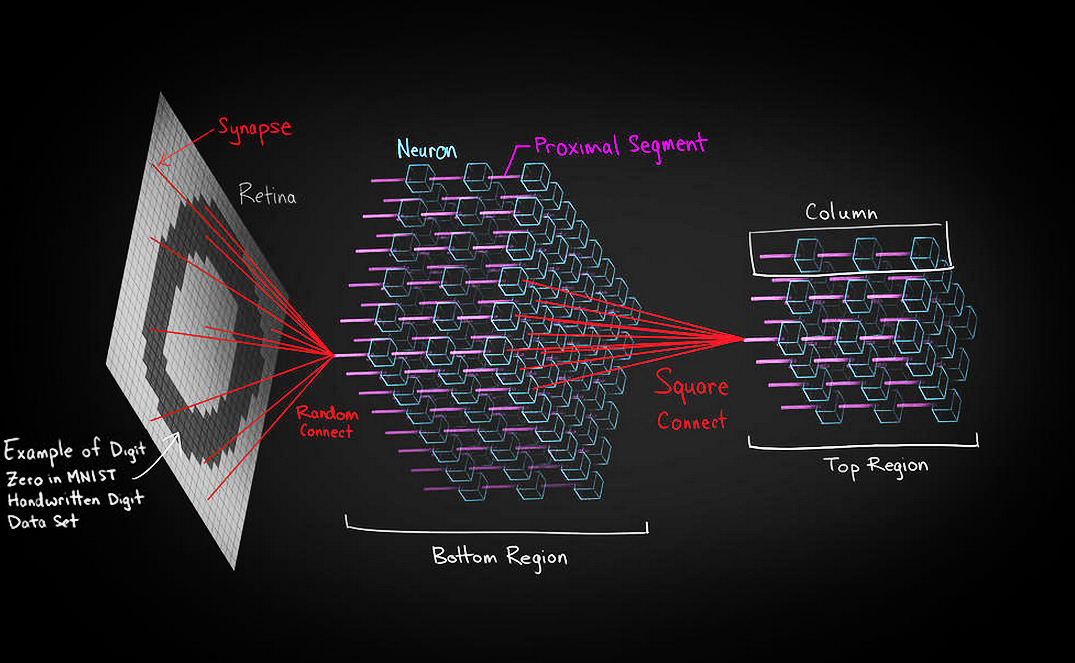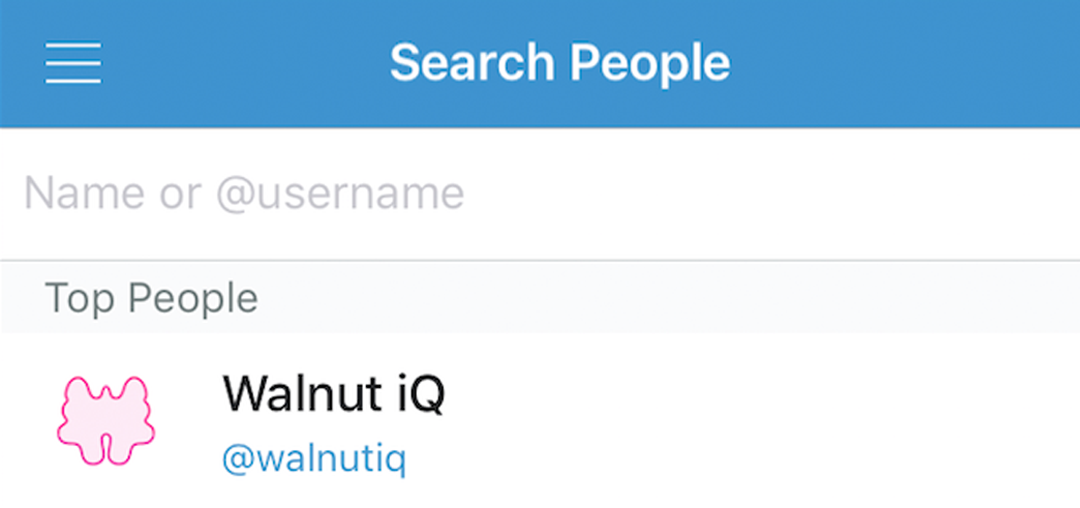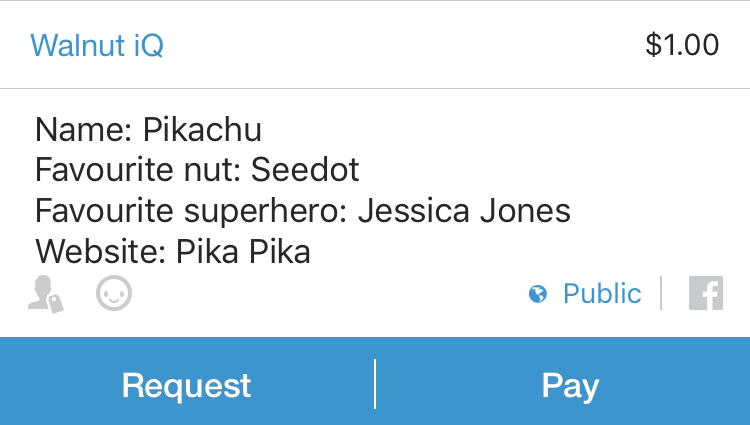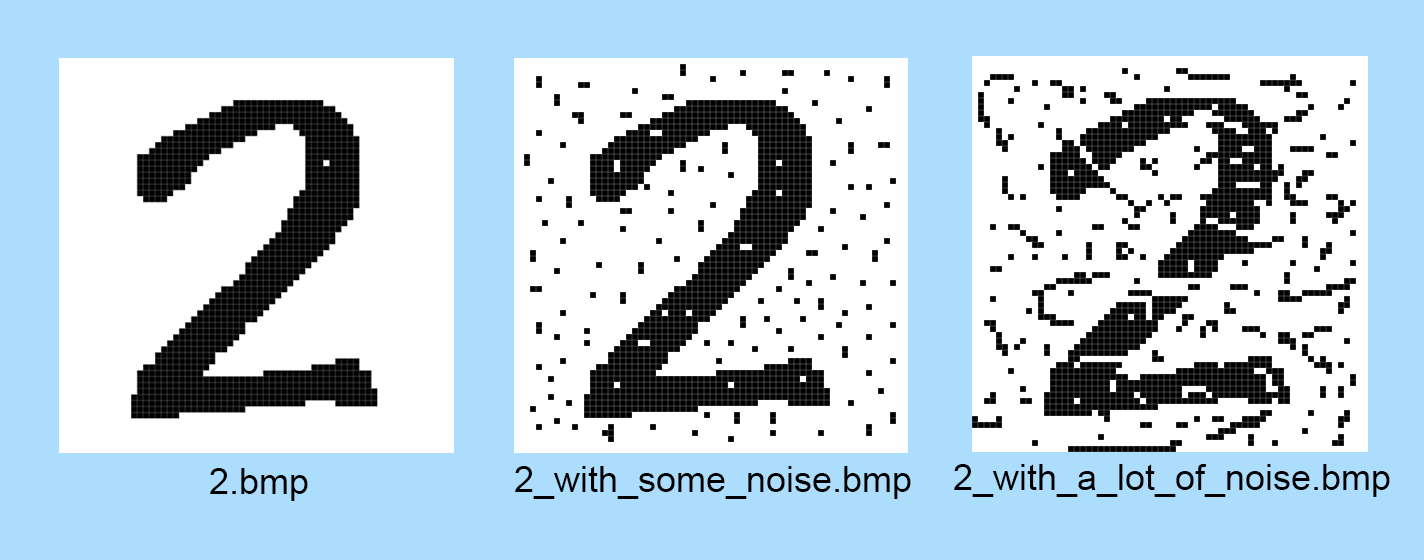Why | How | What | Key Experiments | Team Bios | Investors
"Why must our bodies break down and living cease? We have domesticated the entire planet to our whim. We have supercomputers that fit in our pockets, multiple on your person right now. We make space probes, engineered down to the micron, to send as far as Jupiter. We can make atomic bombs that can kill a great many of us at once."
~ Cheryl Wu aka grungerabbit
I believe that intelligent machines will be able to solve many of our hardest problems and will cause many new hard problems. Our hardest problems like cancer, mortality, and secrets of the universe involve understanding a lot of data and as humans we are limited by the processing power and size of our brains. But if we figure out the computational principles that make you and I intelligent, simulate them on a computer, scale it up to surpass the collective intelligence of the 7+ billion people on Earth we will have created intelligent machines that do not need to eat, sleep, or reproduce that can work on our hardest problems much more efficiently than humans.
Technology has always been used to do great good and great evil and even if we have the best intentions to do good, intelligent machines will cause many new problems. For example there will be massive job loss since most jobs can be replaced by intelligent machines. A possible solution to this hard problem will be to augment our brains and become super intelligent.
The long term goal of this repository is to store code that can simulate a full sized human brain in real time. The current short term goal is to experiment with a simplified visual pathway from an eye(that can move within a "room") to algorithms that model hierarchical regions in layer 2/3, 4, & 5 of the neocortex (70+% of the brain) to understand the principles of intelligence.
After we understood the principles of flight we were able to build planes that are much faster and can carry more weight than birds. After we understand the human brain's computation principles we will be able to create intelligent machines much more intelligent than humans with unimaginable capabilities. At first it will not have any emotions like you and I. This will be a good thing because it will force us to ask if it would be moral to create an super intelligent machine with emotions to help us. It may not necessarily be a good thing for the human race. For example look at how humans treat intelligent pigs. We are more intelligent emotional machines compared to pigs and the future super intelligent emotional machines will be much more intelligent compared to us.
If you are interested in becoming a researcher/developer I would be grateful for your collaboration as I cannot do this alone. We currently have $$$ so read how to get paid hourly rate to code wAlnut to get started. If you are interested in donating please read investors.
This research was initially inspired by everyone at Numenta. Numenta has theorized and tested algorithms that model layers 2/3 & 4 of the human neocortex(~70% of human brain). They generously released the pseudo code for their learning algorithms, and this repository is an extended implementation of their algorithms using object-oriented programming with a focus on understandability over speed and applications to human vision using hierarchy and sensory motor integration. Numenta's implementation of their algorithms can be found here. For more information please:
- Watch this video playlist to become familiar with the neuroscience behind this repository.
- Read Numenta's great explanation of their research in this white paper to better understand the theory behind this repository.
~ Q Liu
Install all code with IntelliJ (Recommended) or Gradle for Linux/Mac/Windows and then read how to contribute.
-
If you have any problems with the following instructions please e-mail quinnliu@vt.edu and I will try to help the best I can. First make sure you have java version 1.8. To check open up a new terminal and type:
prompt> java -version java version "1.8.0_60" # it's only important to see "1.8" in # the version
If you don't have any of those Java versions install java 1.8 by going here. After installing java 1.8 open up a new terminal to check if java 1.8 is installed by retyping
java -versionin the terminal. -
Then install IntelliJ IDEA FREE Community Edition.
- Note where you choose to install this and choose a folder that is easy to access (I stored it in Documents)
-
Open up IntelliJ and create a test project and get HelloWorld working. You will need to find your Java 1.8 jdk in the process. Once you have a program that can print something continue.
-
Go to the top right of this page and hit the
Forkbutton. Then clone your forked wAlnut repository locally. -
Inside IntelliJ, on Windows go to "File"
=>"Import Project...". On Mac go to "File"=>"Project from Existing Sources...". This should open up a new window and you should easily be able to select the "wAlnut" folder. Click "OK". -
Select "Import project from external model". Then select "Gradle" and hit "Next".
-
Select "Use default gradle wrapper (recommended)"
=>hit Finish -
In the left side file viewer right-click the folder "wAlnut" and select
Run 'Tests in wAlnut'. Congrats! Go buy yourself some pistachio ice cream :)
-
If you have any problems with the following instructions please e-mail quinnliu@vt.edu and I will try to help the best I can. First make sure you have java version 1.8. To check open up a new terminal and type:
prompt> java -version java version "1.8.0_60" # it's only important to see "1.8" in # the version
If you don't have any of those Java versions install java 1.8 by going here. After installing java 1.8 open up a new terminal to check if java 1.8 is installed by retyping
java -versionin the terminal. -
Go to the top right of this page and hit the
Forkbutton. Then clone your forked WalnutiQ repository locally. Navigate into theWalnutiQ/folder. -
To run all of the code in the Linux or Mac terminal type:
prompt> ./gradlew build # some other stuff... BUILD SUCCESSFUL # If you see `BUILD SUCCESSFUL` all of the tests have passed!
-
To run all of the code in the Windows terminal type:
prompt> gradlew.bat # some other stuff... BUILD SUCCESSFUL # If you see `BUILD SUCCESSFUL` all of the tests have passed!
-
In the future after editing some code make sure to clean your old compiled code before rerunning the tests by typing:
prompt> ./gradlew clean # removes your old compiled code prompt> ./gradlew build # Congrats! Go buy yourself some watermelon :)
-
You need to be able to use Git & Github.com. If you don't know how I created a easy to follow 1.5 hour playlist on how to use Git & Github here.
-
For now we are using the Git workflow model described here to contribute to this repository effectively. Make sure you understand this model before trying to merge into the master branch. Additionally, before merging your feature branch to master make sure to change the quote at the top of this README.md to another quote.
-
View our issue tracker and create a new issue with a question if you are confused. Otherwise, assign a issue to yourself you would like to work on or suggest a new issue if you kinda know what you are doing.
-
While reading through the code base it will be very helpful to refer to the following labeled model:

If you are confused what a file is doing at a high level read what are all the files here for. If you want to learn about the most important brain theories we are using read important brain theories in use.
- gradle/wrapper = the actual Gradle code for building our Java code
- images = images used in training & testing the partial brain model
- referencedLibraries = contains .jar files(of other people's code) needed to run WalnutiQ
- src
- main/java/model
- MARK_II = the core logic for the
partial brain model. Includes abstract data types for basic brain
structures and learning algorithms that simulate how the brain learns.
- connectTypes = allow the different brain structures to connect to each other in a variety of ways
- generalAlgorithm
- failureResearch
- spatialAlgorithms = rethinking SDR algorithm to create different variations of the algorithms from the ground up using ideas from spatial pooler when necessary.
- temporalAlgorithms = rethinking a prediction algorithm to create different variations of the algorithm from the ground up using ideas from temporal pooler when necessary.
- SpatialPooler.java = models the sparse & distributed spiking activity of neurons seen in the neocortex and models long term potentiation and depression on synapses of proximal dendrites
- TemporalPooler.java = models neocortex's ability to predict future input using long term potentiation and depression on synapses of distal dendrites
- failureResearch
- parameters = allows construction of different WalnutiQ models from command line for this repo https://github.com/WalnutiQ/call_wAlnut
- region = components that make up a Region object
- sensory = classes for allowing brain model to receive sensory input
- unimplementedBiology = parts of the nervous system we haven't implemented into this model
- util = classes that enable the brain model properties to be viewed graphically and efficiently saved and opened
- MARK_II = the core logic for the
partial brain model. Includes abstract data types for basic brain
structures and learning algorithms that simulate how the brain learns.
- test/java/model = test classes for important classes in the
src/main/java/modelfolder- experiments/vision = experiments with partial visual pathway models
- main/java/model
- .gitignore = contains names of files/folders not to add to this repository but keep in your local WalnutiQ folder
- .travis.yml = tells our custom travis testing site what versions of Java to test the files here
- LICENSE.txt = GNU General Public License version 3
- README.md = the file you are reading right now
- build.gradle = compiles all of the code in this repository using Gradle
- gradlew = allows you to use Gradle to run all of the code in this repository in Linux & Mac
- gradlew.bat = allows you to use Gradle to run all of the code in this repository in Windows
-
Theory: 1 common learning algorithm in the neocortex of the brain
-
Supportive:
-
1992 Paper here from Department of Brain and Cognitive Sciences at MIT.
- Summary: A portion of wires of the optic nerve are routed to the auditory
cortex in ferrets. The neurons of this primary auditory cortex(A1) with
vision input did not work exactly like neurons in primary visual
cortex(V1). Neurons in rewired A1 had larger receptive field sizes
and other differences. However there are also similarities including:
- rewired A1 neurons showed orientation and direction selectivity.
- similar proportions of simple, complex, and nonoriented cells between rewired A1 and V1.
- implies "significant implications for possible commonalities in intracortical processing circuits between sensory cortices".
- Summary: A portion of wires of the optic nerve are routed to the auditory
cortex in ferrets. The neurons of this primary auditory cortex(A1) with
vision input did not work exactly like neurons in primary visual
cortex(V1). Neurons in rewired A1 had larger receptive field sizes
and other differences. However there are also similarities including:
-
1988 Paper here from Laboratoire des Neuroscience de la Vision at Universite de Paris.
- Summary: Wires of the optic nerve were routed permanently to the
main thalamic somatosensory nucleus in hamsters. After the hamsters
grew up the neurons in the somatosensory cortex were recorded.
The "somatosensory neurons responded to visual stimulation of
distinct receptive fields, and their response properties resembled,
in several characteristic features, those of normal visual cortical
neurons."
- "the same functional categories of neurons occurred in similar proportions, and the neurons' selectivity for the orientation or direction of movement of visual stimuli was comparable" between normal hamsters and rewired hamsters.
- "These results suggest that thalamic nuclei or cortical areas at corresponding levels in the visual and somatosensory pathways perform similar transformations on their inputs".
- Summary: Wires of the optic nerve were routed permanently to the
main thalamic somatosensory nucleus in hamsters. After the hamsters
grew up the neurons in the somatosensory cortex were recorded.
The "somatosensory neurons responded to visual stimulation of
distinct receptive fields, and their response properties resembled,
in several characteristic features, those of normal visual cortical
neurons."
-
-
Not supportive:
-
2002 Paper here from Vision, Touch and Hearing Research Centre at The University of Queensland.
- "recent studies have revealed substantial variation in pyramidal cell structure in different cortical areas".
- Some of these variations like increase in dendritic arbor size( dendritic branching) can be resolved with the idea of a common algorithm.
-
2008 PhD thesis here by Dileep George from Stanford University
- "Until we understand and explain the computational reason behind a large majority of such variations, the common cortical algorithm will have to be considered as a working hypothesis".
-
-
Conclusion: If cortex X(arbitrary cortex) of the neocortex(contains visual cortex, auditory cortex, somatosensory cortex, and others..) can be given non-normal sensory input usually given to say cortex Y and then learn to process this new input similarily to how cortex X would process it, then we can hypothesize that there is a common learning/predicting algorithm in all cortices of the neocortex.
-
-
Theory: The 1 common learning algorithm learns about the world by using when things happen across time. The algorithm makes no assumptions about the different transformations that our world has(shifts, rotations, etc.). The algorithm ONLY says if 1 pattern follows another in time in a predictable way, then they are causally related and should have the SAME REPRESENTATION in the brain.
-
Kinda Supportive:
- 2008 PhD thesis here
by Dileep George from Stanford University
- There is a idea in optimization algorithms called No Free Lunch theorem. No Free Lunch theorem "state[s] that any two optimization algorithms are equivalent when their performance is averaged across all possible problems".
- "On the surface, the NFL theorem seems to create problems for the idea of a common cortical algorithm. How can one mechanism/algorithm do very well on tasks as different as vision, audition and language? The answer comes from the part of the NFL theorem that talks about the assumptions that need to be exploited ... If the cortex is good at learning a wide variety of tasks using a common mechanism, then there must be something common about these seemingly different tasks.".
- 2008 PhD thesis here
by Dileep George from Stanford University
-
Not supportive:
-
No Conclusion Yet: Still experimenting with rethinking a prediction algorithm from the ground up using ideas from temporal pooler when necessary in folder failureResearch.
-
The following experiments show off how a general learning algorithm uses the brain's data structure to it's advantage to process input data and create intelligence.
The first problem a general learning algorithm has is to not get confused by all the noise in the world. The noise invariance experiment illustrates how the first part of the algorithm does not get confused by noisy input data.
Here is some example code of how part of the theorized prediction algorithm works. It is a beautiful summary of how columns of neurons in your neocortex are probably working to encode what you see. The following are the three images the retina will be looking at:
retina.seeBMPImage("2.bmp");
spatialPooler.performPooling();
// set1 = ((6,2), (1,5))
// (6,2) and (1,5) are the columns in the Region that are active after seeing
// "2.bmp"
assertEquals(set1, this.spatialPooler.getActiveColumnPositions());
retina.seeBMPImage("2_with_some_noise.bmp");
spatialPooler.performPooling();
// set1 = ((6,2), (1,5))
// NOTE: the columns that are active are still the same even though there was
// quite a lot of noise in the input data
assertEquals(set1, this.spatialPooler.getActiveColumnPositions());
retina.seeBMPImage("2_with_a_lot_of_noise.bmp");
spatialPooler.performPooling();
// when there is a lot of noise notice how the active columns are
// no longer the same?
// set2 = ((6,2), (2,5))
assertEquals(set2, this.spatialPooler.getActiveColumnPositions());You can view the entire file in NoiseInvarianceExperiment.java. Please do not be afraid to ask a question if you are confused! This stuff took me several months to fully understand but it is really beautiful after you understand it.
Hi my name is Q.
In 2011 I watched a talk about a guy trying to build a machine more intelligent than humans and I fell in love with this idea. At the time I believed that an intelligent machine would be able to solve many of our hardest problems(ex. secrets of the universe and cure for cancer) and would cause many new hard problems(ex. massive job loss). I was determined to use it to benefit humanity as much as possible but first I needed to build it.
I told myself I would give myself 1 year(end of 2012) to build a machine more intelligent than humans which I believed was plenty of time since I didn’t know how to code yet. By 2013 2 years had gone by and although I had learned a lot of interesting brain theories from neuroscientists and coding techniques from computer scientists I gave up on this dream out of frustration on my speed of progress and fell into a deep depression. Most of my identity came from the brain research I did and I had hit a wall in the research I did not have the confidence to break through.
After focusing on my physical health, family, and friends I eventually got out of my depression and decided to restart working towards my dream of creating a intelligent machine for the past year. However, this time I have learned to use habits over motivation, collaboration over working alone, sustainability over crunch, intense focus on what is necessary over nice to haves, acknowledgement you must sometimes forget what you know in order to create something new, and many beautiful ideas I have yet to learn.
Outside of AI I like to make YouTube videos, skateboard, watch rom coms, and walk around manhattan eating pistachio ice cream and watermelon.
Coming soon she says...
Coming soon he says...
Kevin Harrington is a java developer and roboticist based in Worcester MA. He brings robotics controls, high performance Java, and hardware integration skills to the project. He will be focused on sensor-motor interfaces and simulationg the robot for learning environments.
Hi, I'm Mark. I like math, sometimes.
Interested in helping us code an intelligent machine? Read how you can get paid an hourly rate to code wAlnut to get started.
Hi! My name is Q. To me a wAlnut investor is someone who believes we can build a machine more intelligent than humans and use it for more good out of love than evil out of fear.
-
If you would like to become an investor of wAlnut simply venmo your donation. In the
Search Peoplesection type@walnutand look for the pink walnut logo. It will look similar to this:
-
In the venmo
What's it for?section please provide the following information as you would like it to be displayed in our master investors list. Here is an example of one of our investors:
-
If you would like to learn how your donation is being spent to pay developers read here.
-
We will periodically make youtube videos posted here explaining our research. Care will be taken to ensure it is understandable to everyone including 10 year old kids with no neuroscience or coding background.
-
In the history of mankind some technologies are so powerful it would be wrong to have it only accessible by a group of people. Examples include electricity, computers, the internet, and now its a machine smarter than humans. Our latest research and code will always be available here for free to everyone in the world with a laptop, internet, and a little bit of curiosity.
| Name | Amount (USD) | Favorite type of nut | website |
|---|---|---|---|
| Q Liu | $700.82 | Pistachio ice cream | www.youtube.com/quinnliuvideos |
| Frederick Scholl | $10 | Unkown | A Mystery |
| Perry Leong | $5 | Cashews | linkedin.com/profile/view?id=183115052 |
| Ying Ying Wu | $5 | Unkown | A Mystery |
